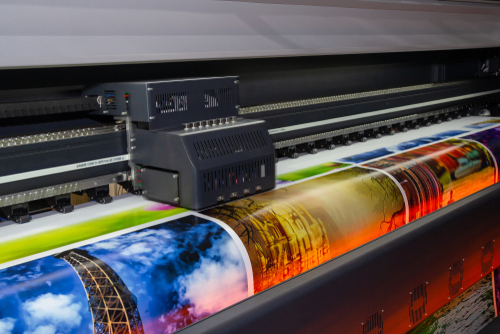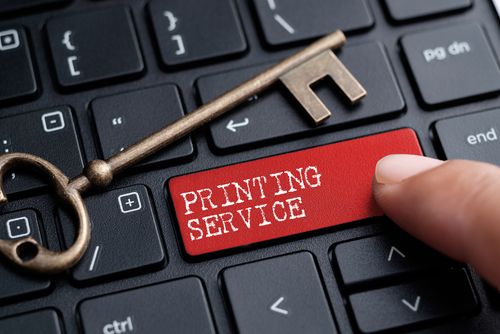Ever since I was first introduced to the mechanics of lithographic (litho) offset printing, I have been fascinated by the whole process. I have watched with awe the layering of the four basic colours : Cyan, Magenta, Yellow and Black (CMYK, with K representing the key colour of black) which ultimately result in the finished full-colour printed copy. It never ceases to amaze me that so many different colours and shades can be produced from these four basic colours which are at the heart of litho printing. There are, however, times when these four colours cannot accurately reproduce, for instance, a company logo in a specific colour, or come close enough to representing the metallic colours of gold, silver, bronze and copper. It is at these times that an additional, single colour called a ‘spot’ colour is used alone and is mixed by the ink manufacturers to meet that specific colour need. Litho printing is, for me, the ultimate method of representing life on paper in all its glory and perfection.

What are the two main types of printing?
There are two distinct and popular forms of printing, both of which effectively produce the same end result. There is lithographic offset printing which uses mechanical printing presses, and there is digital printing, which – very simply put – was originally produced on what used to be considered very sophisticated photocopying/duplicating machines. The major differences are in cost, time, speed of production and, especially to very particular individuals like me, quality.
So, how do they differ from each other?
The two types of printing are entirely different in their use and application. Whilst litho printing seeks to accurately reproduce the colours that we actually see in the real world as closely as possible, digital devices and computers reproduce images according to a specific representation of colour known as a colourcube. Since simple digital devices mainly use the three basic colours of Red, Green and Blue (RGB), they represent a digital interpretation of colour. Nonetheless, as digital processes are becoming ever more sophisticated, colour accuracy and sharpness of image are becoming closer to the pin-point accuracy of litho printing. Due to its production process, digital printing involves a certain loss of fine image detail in the end product. Both types of printing have their place, for different reasons and applications. Litho printing is time-consuming, labour-intensive and expensive, particularly on smaller quantities, but increases its value on longer runs where digital printing cannot compete economically. Litho printing takes physical printing plates, time and additional paper stocks when initially setting up for the print run, known as a ‘make-ready’, where accurate register of colour-on-colour and ink saturation are carefully aligned to produce the final printed product. Digital printing does not use conventional printing plates to determine the placement of specific ink colours, but produces copy directly from an electronic image. This type of printing is ideal for very short print runs, one-off publications of books, catalogues, leaflets, etc., which can be produced at extremely short notice with no make-ready delays.
Do both printing processes use the same inks?
Digital printing deposits a fine layer of pigment or toner onto a wide variety of substrates such as paper, photo-paper, canvas, or other appropriate surface, which is then ‘set’ through the application of heat, toner or a UV curing process which instantly fuses the toner onto the surface. Litho printing, on the other hand, uses inks which soak into the surface of the paper, and additional setting processes are not required, although there is a drying period involved.
It’s your choice on which is the best process for your purpose
There will always be a need for printed documentation, particularly for long-run work (magazines, brochures, catalogues, annual reports, etc.) and large format printing such as banners, posters, 12-month-to-view calendars, folding maps, etc. Low quantity or short-run requirements are also steadily increasing, particularly as many companies and businesses now market online and do not need hard copy printed pamphlets to grow demand for their services and products. Almost any printing requirements can be fulfilled by either litho or digital printing processes. Each of these two processes has its place and strengths/weaknesses, and there is no definite right or wrong with either of the two options available. As long as the finished printed product meets requirements in terms of time, cost and quality, the choice on which route to follow is entirely up to you.
To find out more about printing companies and processes, see Uptasker’s articles and suppliers’ listings.

